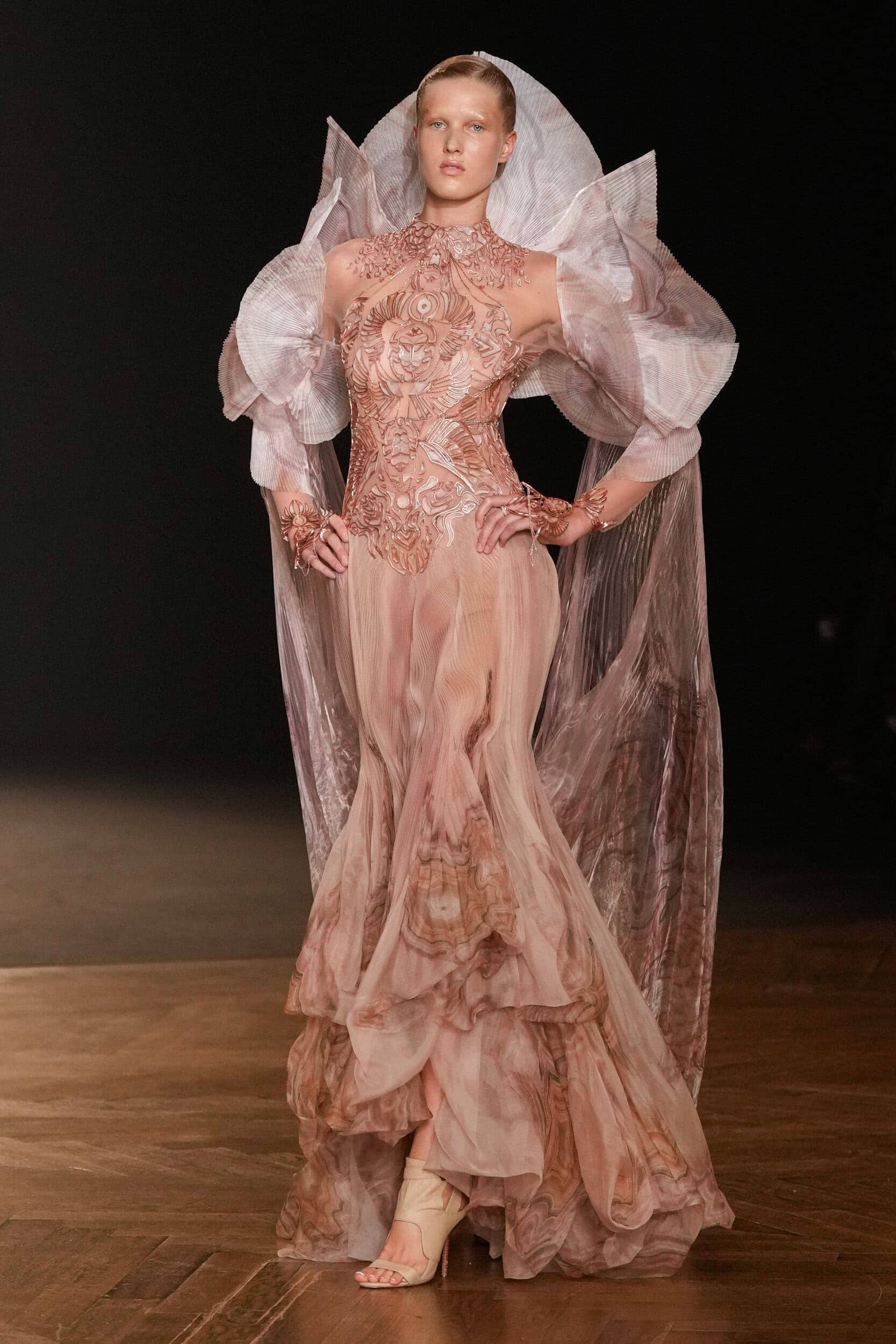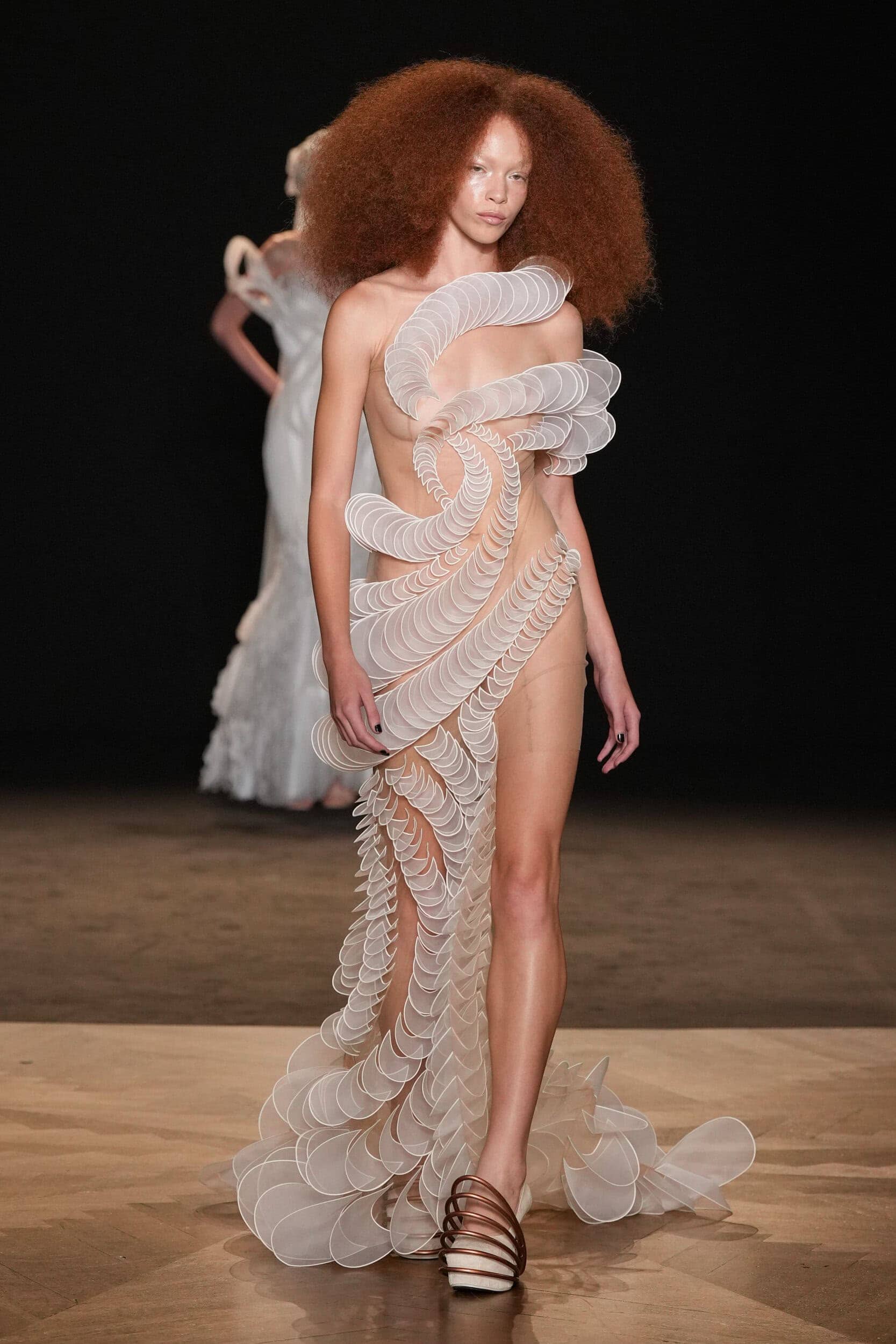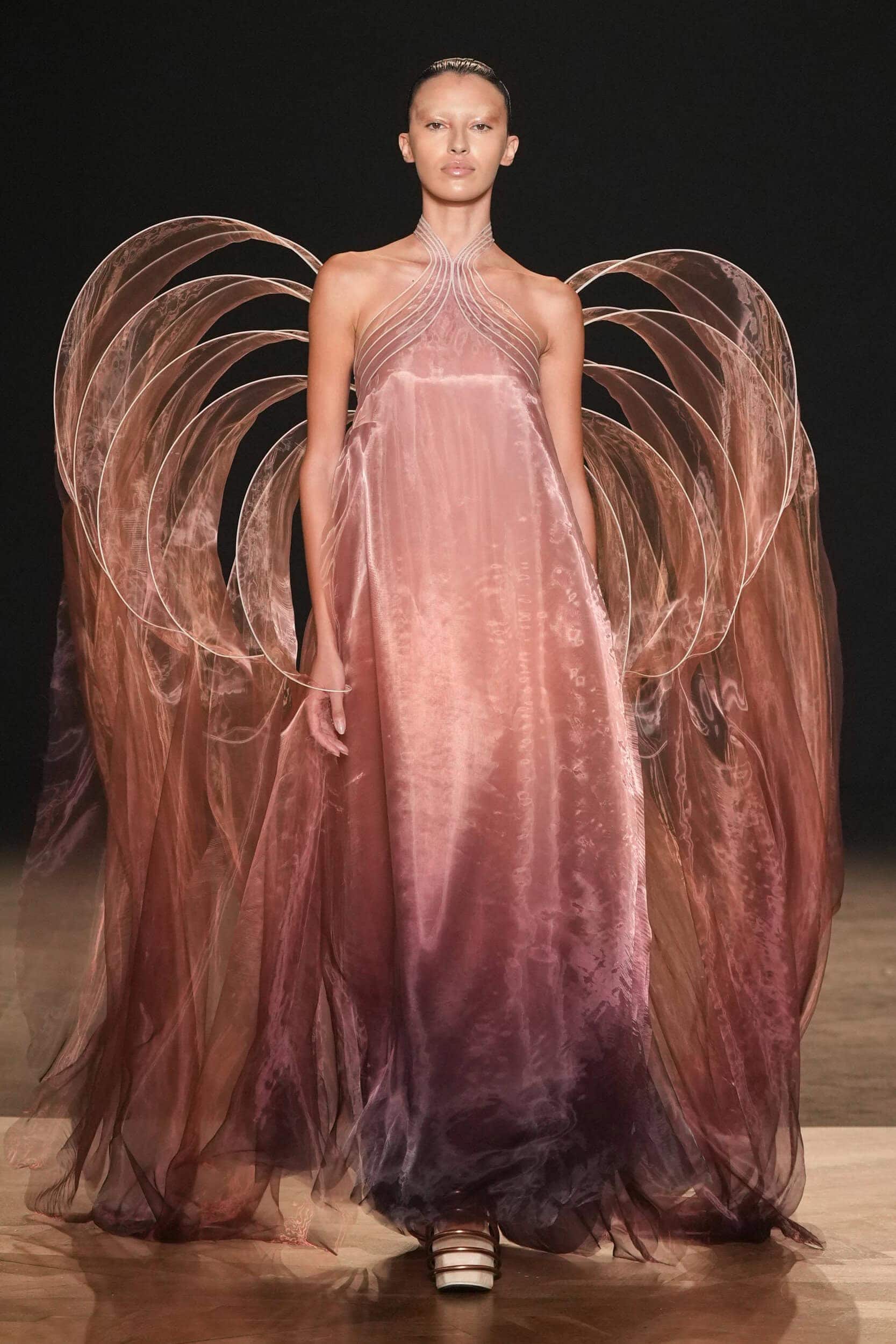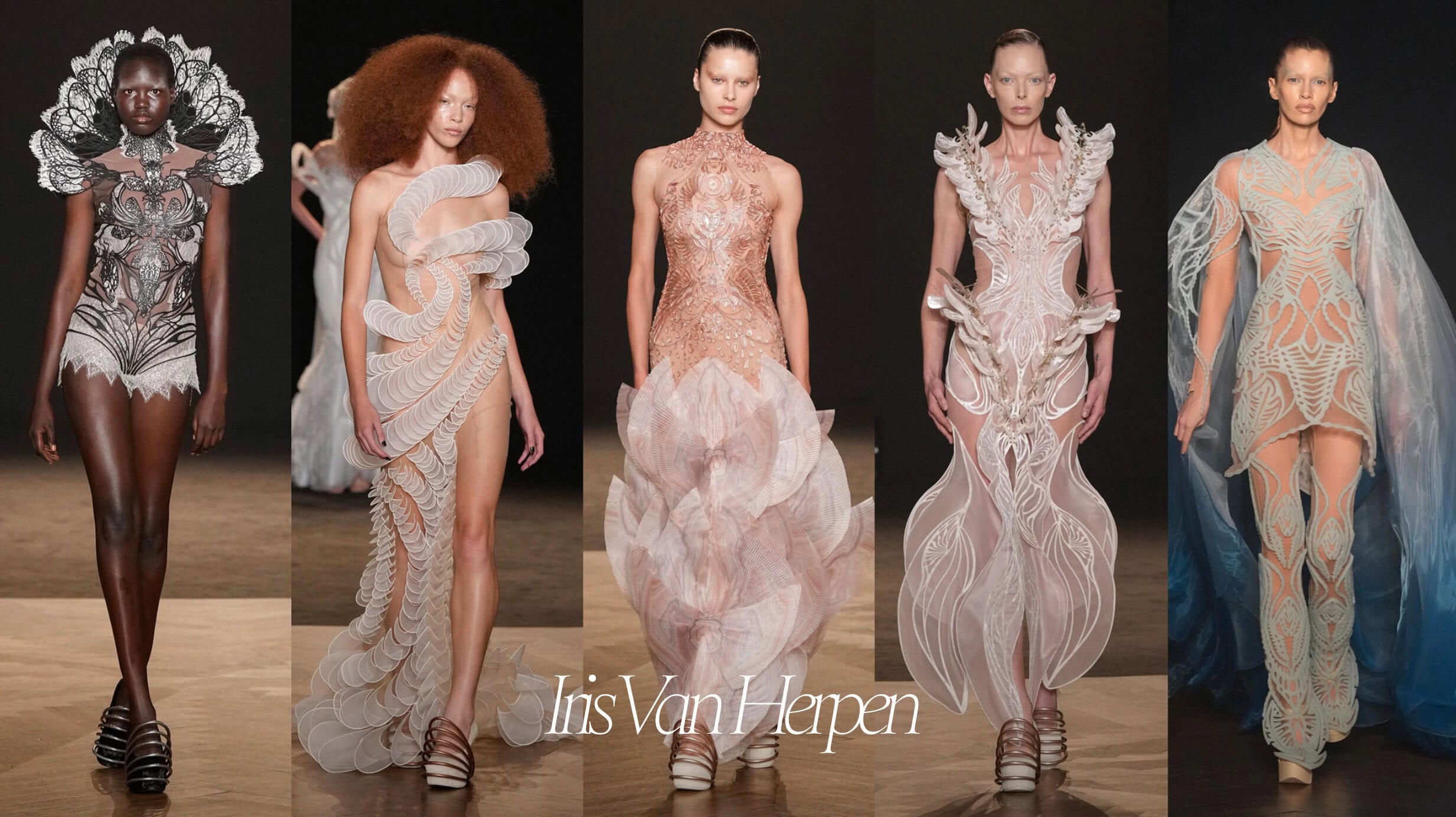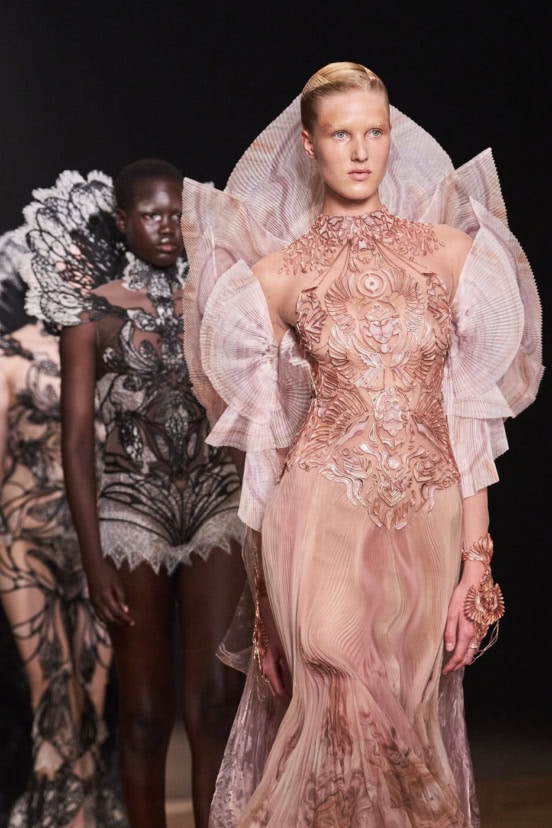Living Couture: Iris van Herpen’s Mesmerising Equilibrium
Iris Van Herpen‘s Fall 2025 couture fashion show review
By Mackenzie Richard Zuckerman
Under cathedral-like beams glowing moodily from deep-sea blue to bioluminescent green, Iris van Herpen unveiled Sympoiesis—a collection that felt less like a runway show and more like an encounter with a sentient reef. Sculptural gowns rippled like jellyfish in slow bloom, whisper-light wings rode unseen currents, and silk trapped in resin paused time mid-crash. Each piece, whether it fluttered like plankton or stood strong like coral armor, whispered the same idea: couture isn’t just a reflection of nature—it’s in active dialogue with it.
And in this collection, that dialogue turned into a duet. Enter: a couture first—a living dress grown from algae. Yes, grown. Not crafted, not constructed—grown. Van Herpen, never content to simply observe nature, has begun co-authoring with it.
The house’s hallmarks—3D-printed exoskeletons, kinetic pleats, and whispering armatures—re-emerged here, but with a shift. Van Herpen calls it “collaborative preservation.” Think Gaia hypothesis, with sequins: every look was a systems diagram in silk, insisting that wearer, maker, and biosphere are one continuous circuit.
THE COLLECTION
THE VIBE
Living Couture & Mesmerizing Equilibrium
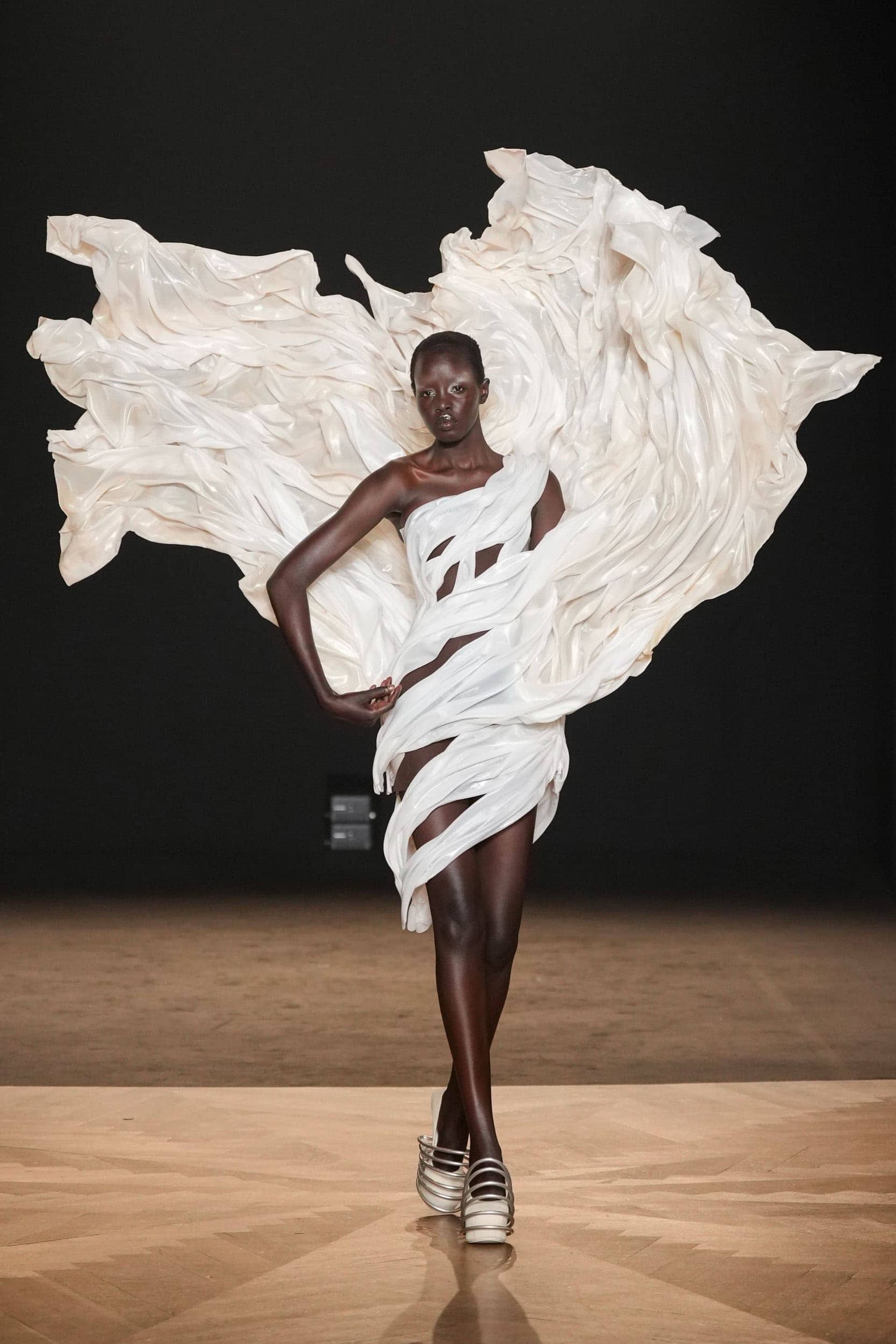
Dutch designer Iris van Herpen opened her Sympoiesis collection at Paris Couture Week with a literal living look—a show-stopping dress inhabited by 125 million bioluminescent algae. Nurtured in seawater and suspended in a nutrient gel, the gown wasn’t constructed so much as cultivated. Grown into being. It was an opening salvo that set the tone: this was couture not just as wearable art, but as bioactive collaboration.
From there, the show slipped into a kind of mesmeric trance. Beneath vaulted beams glowing like deep-sea plankton, garments unfolded with a precision so fluid they felt sentient. Van Herpen’s great talent has always been her ability to collapse binaries—structure and softness, the mechanical and the ethereal. But here, that balance was even more finely tuned.
Movement was the show’s real protagonist. Coil-vein panels flexed and contracted in time with the models’ breath, like wearable musculature. Heel-less sonar shoes created an eerie, gliding gait—as if the runway itself had softened into water. Garments didn’t sit on the body so much as orbit it: air-fabric wings fluttered without turbulence, and kinetic armatures hovered with near-invisible engineering.
The algae gown, far from being a gimmick, pulsed with its own rhythm—its subtle luminescence tracking the ambient light like a slow, meditative heartbeat. It didn’t demand attention, it earned it.
Van Herpen also introduced a striking sense of restraint. A monochrome bridal silhouette in Brewed Protein™—a sustainable bioengineered fiber—flowed in a seamless column, broken only by the release of coral-like petals at the hem. Elsewhere, organza capes shimmered so sheer they were almost hallucinatory, functioning more as phantom auras than as traditional garments.
What emerged was a delicate equilibrium: breathtaking technical bravura anchored by intentional quiet. These weren’t just feats of fashion engineering—they were moments of stillness made visible. Van Herpen didn’t just show clothes; she charted a new tempo. One where the future drifts in, glides across a surface, and leaves a ripple rather than a roar.
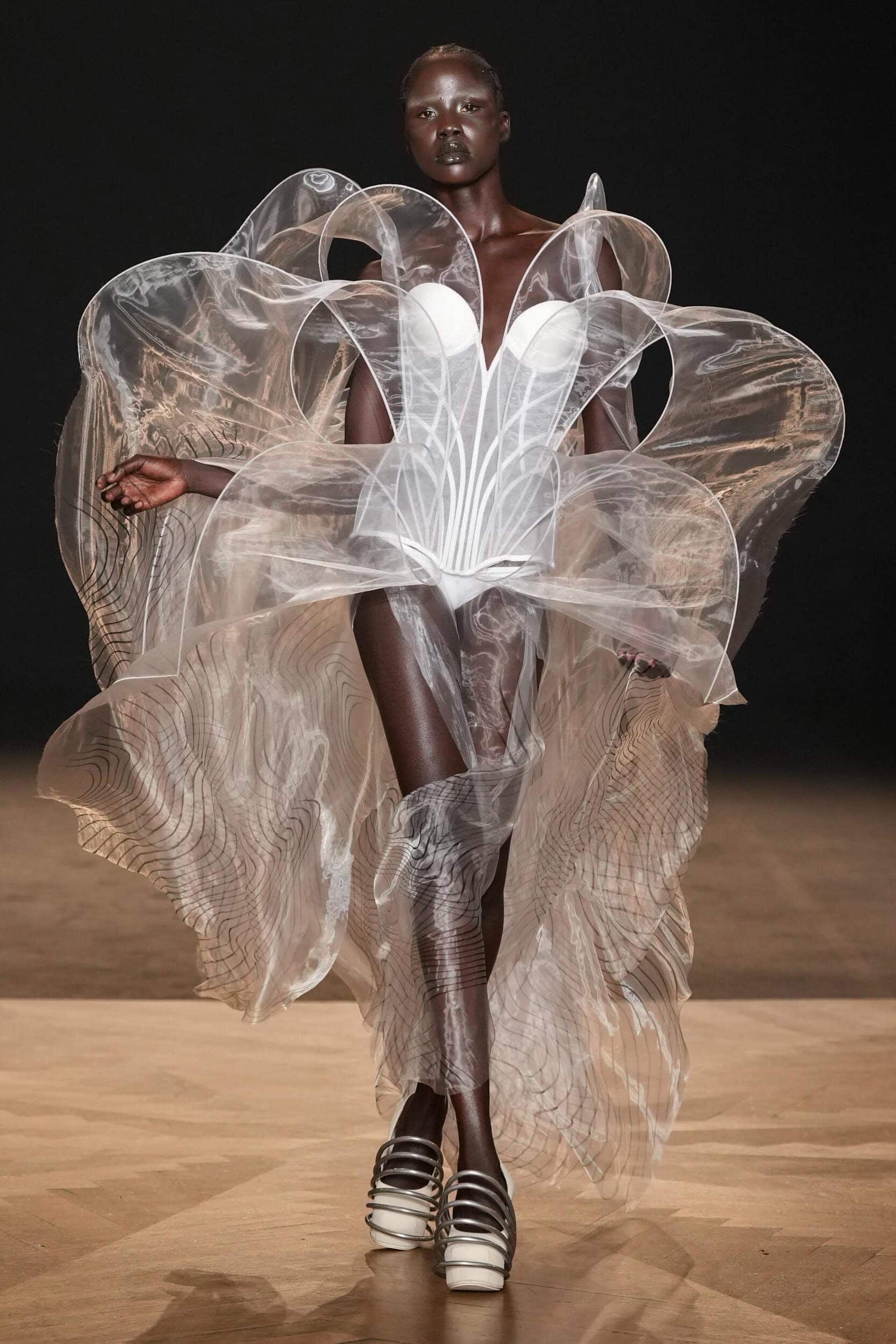
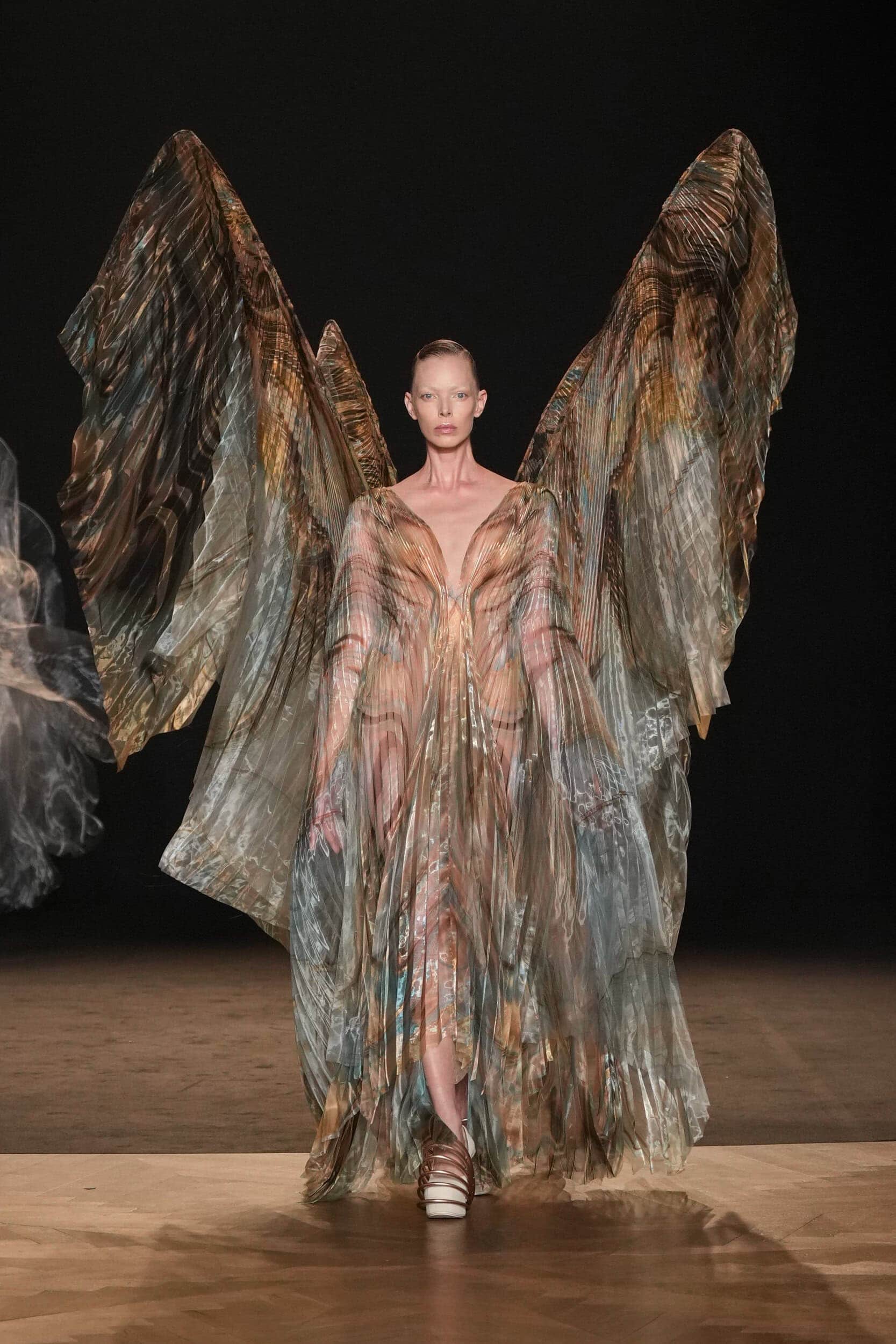
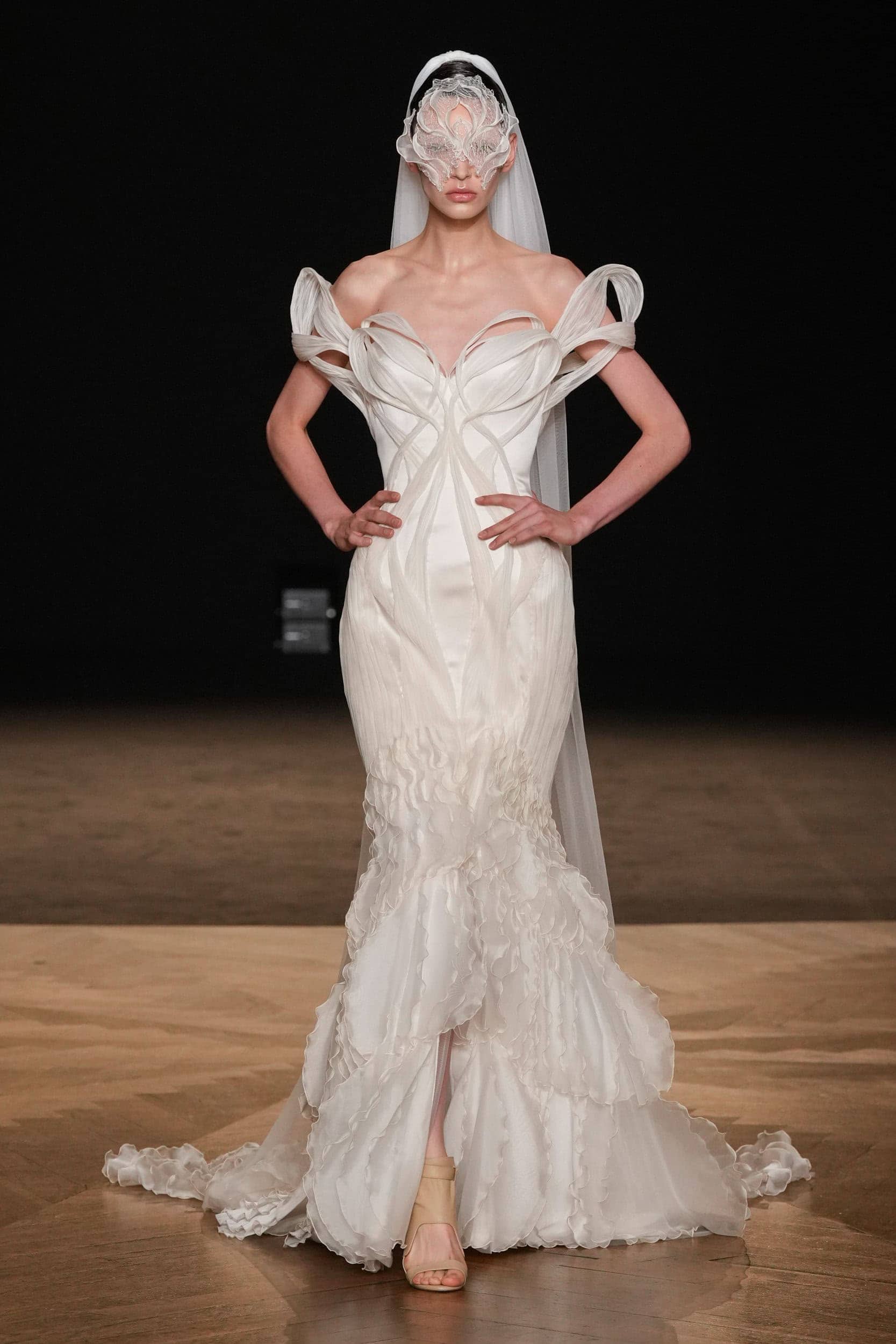
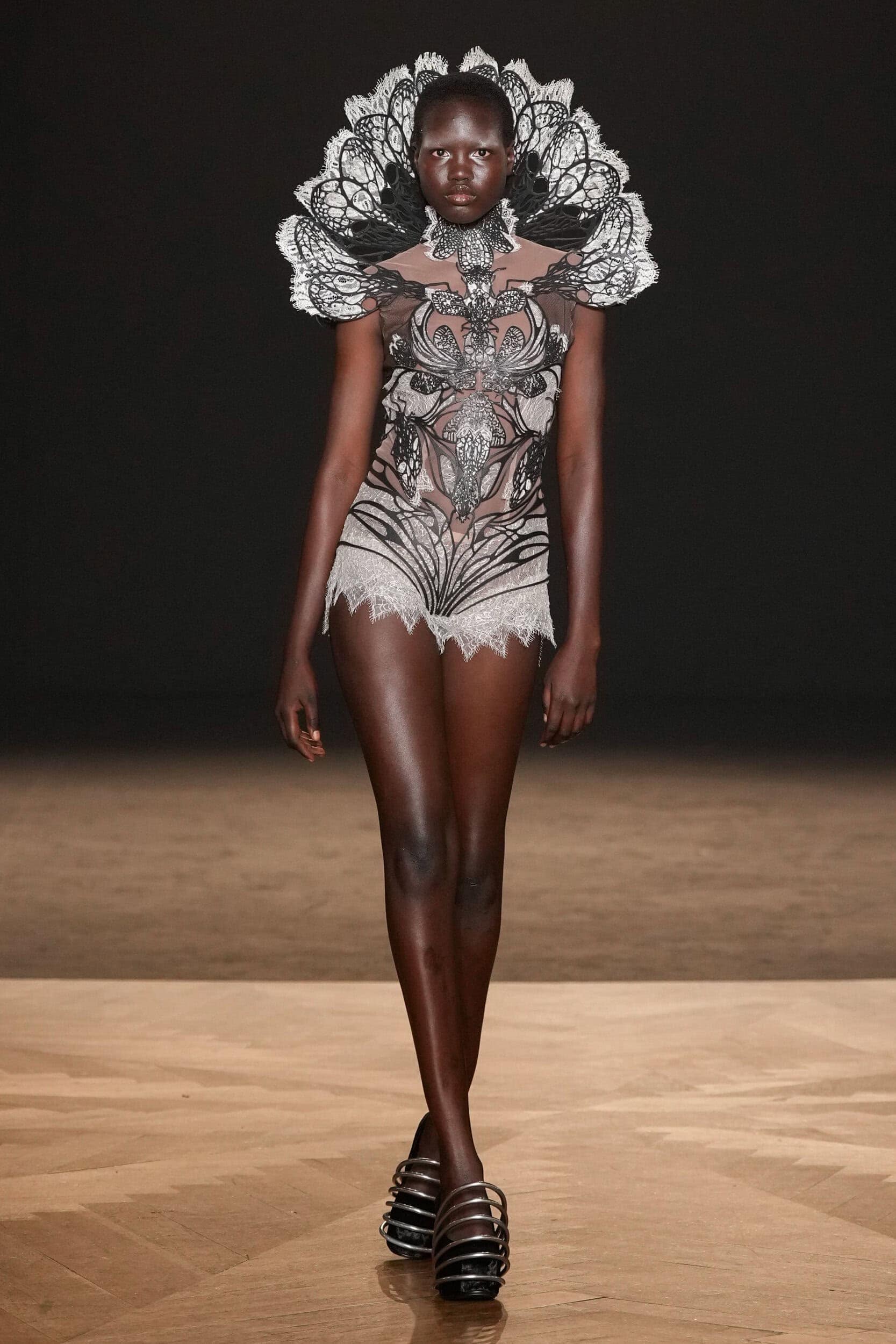
THE DIRECTION
THE QUOTE
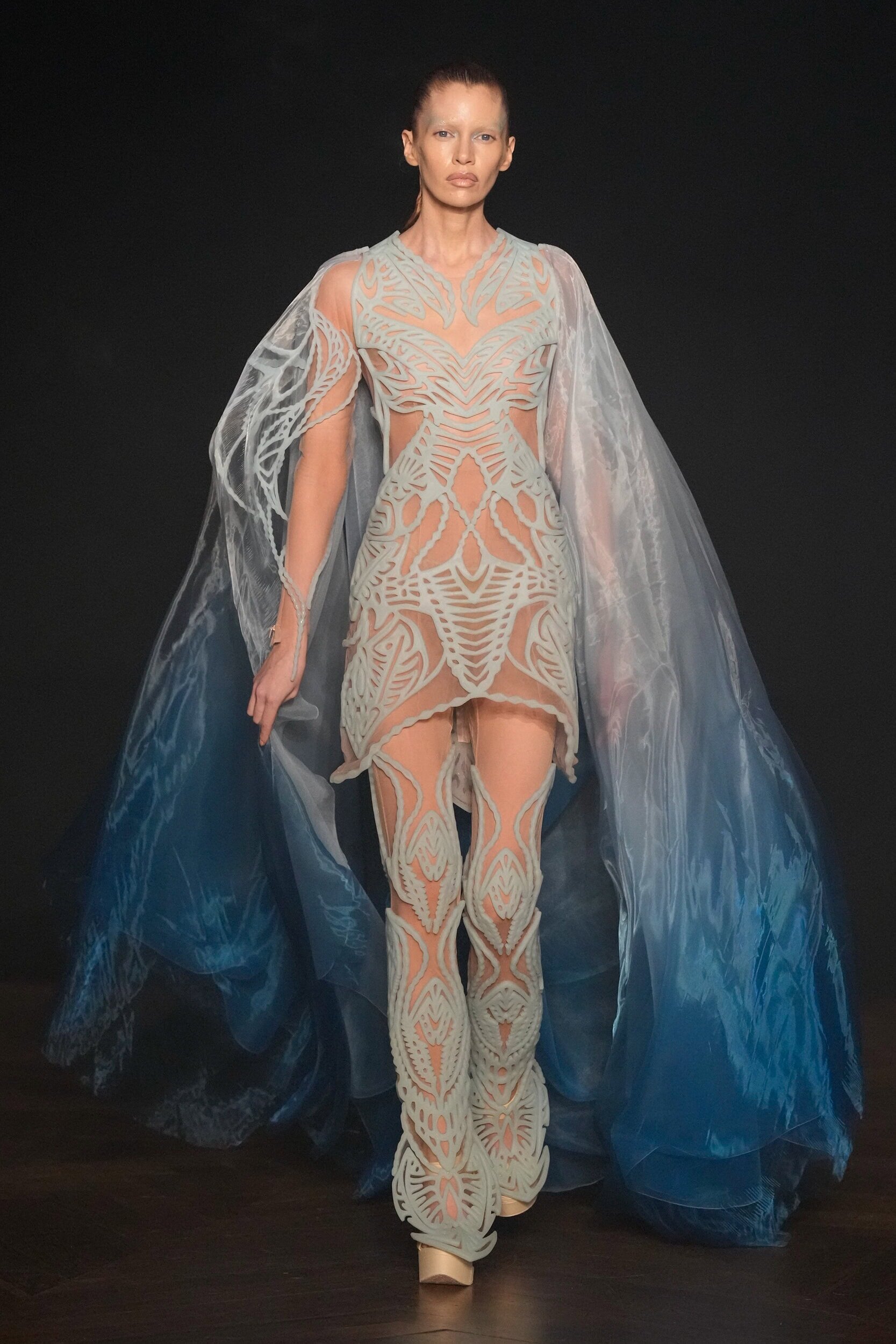
“The living dress is a metaphor for the whole collection,” Iris van Herpen said backstage. “The ocean is the ecosystem that cares for us, so our challenge was to create something we must also care for—to keep it alive and let it grow. Working with bio-engineer Chris Bellamy, we moved from simply being inspired by nature to truly collaborating with it. The algae gown needs eight hours of sunlight, a rest cycle, and minimal stress—almost like a human being—so making it became a relationship, not just a construction.”
THE WRAP UP
With Sympoiesis, Iris van Herpen doubles down on what makes her singular: a systems-thinking approach to couture. But this time, she does it with a quiet confidence that feels like evolution.
She’s still the engineer of awe, but now her language includes simplicity. A single-seam protein column. Sheer capes so diaphanous they felt like memory. Innovation doesn’t need to scream, and Van Herpen knows it—it can glimmer, glide, and exhale.
Yes, the living-algae gown will need the care of a museum conservator. And no, the maison isn’t making diffusion lines to bring it to your closet anytime soon. But maybe that’s the point. These pieces exist on the edge of what fashion can be. They’re couture as research, couture as a question: what if our clothes were alive?
Van Herpen didn’t just preserve her DNA with this collection—she enriched it, adding a note of stillness to her usual sci-fi crescendo. In an industry high on speed and spectacle, she’s offering another path. One where the future arrives softly, breathes beside us—and still manages to stop time.
